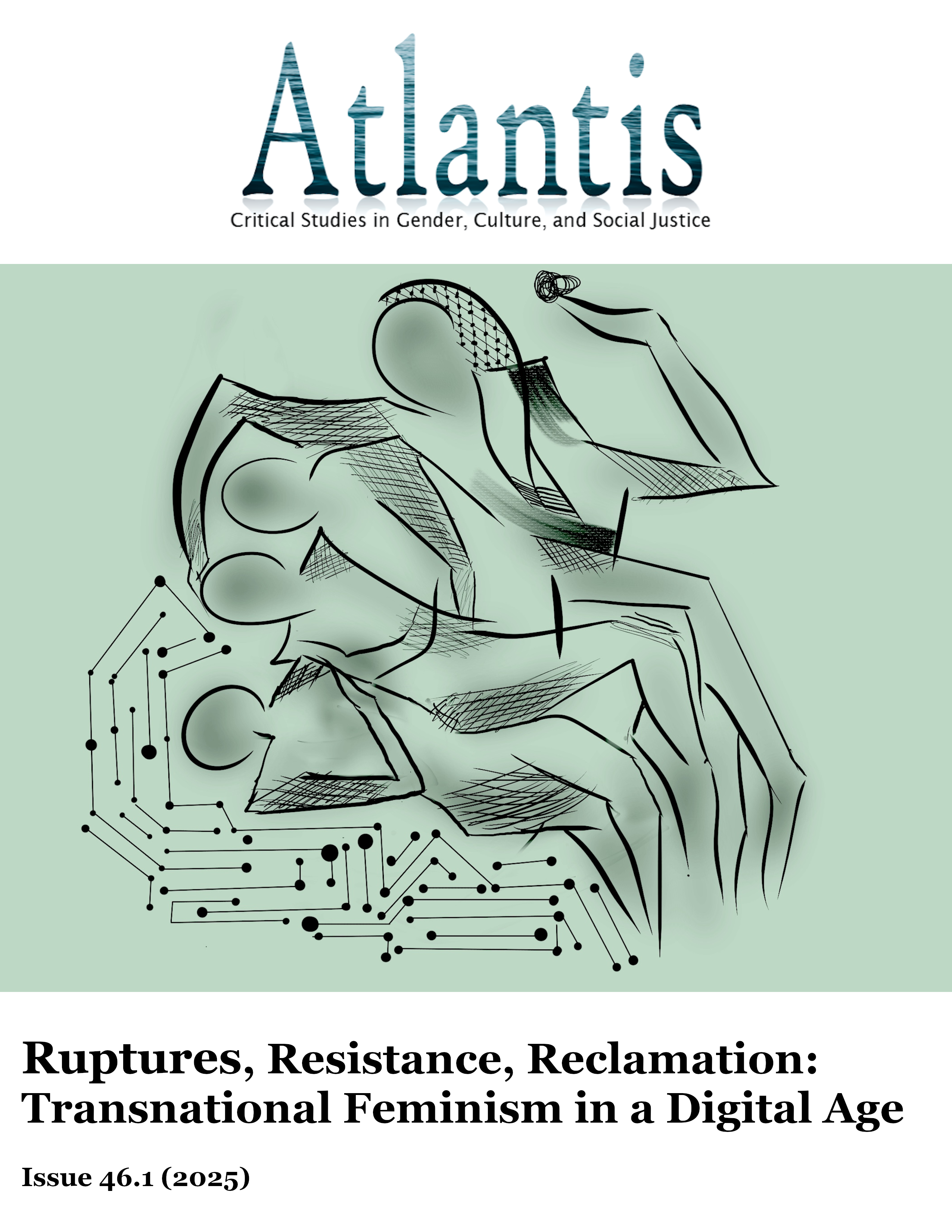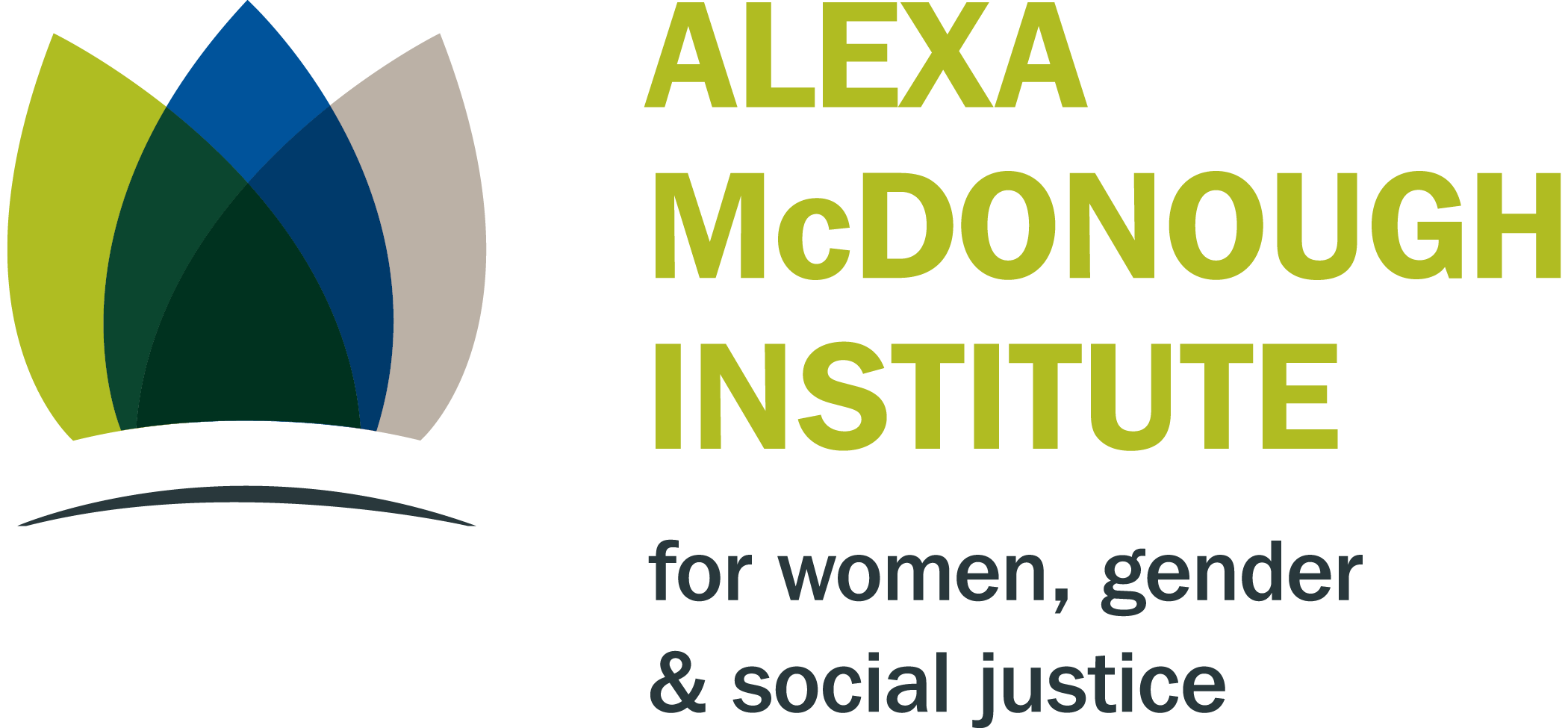Imaginer l’invisible
Mots-clés :
diagnostic numérique, technologies d’imagerie médicale, biomédecine, endométriose, maladies chroniques, avenirRésumé
Ce commentaire politise l’économie relationnelle et technique de la biomédecine ainsi que l’avenir qu’elle réserve aux corps féminisés atteints de maladies chroniques. À mesure que les technologies d’imagerie médicale numérique évoluent, la visualisation des maladies devient de plus en plus sophistiquée. Tout d’abord, je pose un regard critique sur les conséquences de cette évolution pour les corps féminisés atteints de maladies chroniques, en prenant l’exemple de l’endométriose, une maladie douloureuse chronique courante qui n’est pas bien comprise dans le paradigme biomédical. Les technologies d’imagerie améliorées promettent d’éclairer des aspects auparavant inconnus de la physiopathologie des maladies, mais quel avenir ces progrès technologiques permettent-ils d’envisager, et pour qui? D’un point de vue critique et intersectionnel, il est clair que l’avenir biomédical et technologique imagine des corps particuliers, dans des lieux particuliers, et à des fins particulières, mais pas étrangères. L’amélioration des capacités à visualiser la maladie grâce aux technologies numériques dans un paradigme biomédical ne nous oblige pas à voir les choses différemment, alors que c’est peut-être précisément ce dont nous avons besoin. Ainsi, en m’appuyant théoriquement sur les travaux de bell hooks ainsi que sur des études féministes critiques sur le handicap, je jette les bases d’une politique intersectionnelle essentielle qui transforme les façons biomédicales et technologiques de voir le corps féminisé atteint d’une maladie chronique. Une telle politique permet non seulement d’imaginer un autre avenir, mais aussi de contribuer à ce qu’il se réalise concrètement.
Références
Brown, R. n.d. “Histopathology.” Factsheet. The Royal College of Pathologists. www.rcpath.org/discover-pathology/news/fact-sheets/histopathology.html.
Becker, Christian M. et al. 2022. “ESHRE Guideline: Endometriosis.” Human Reproduction Open 2022(2). hoac009. doi: 10.1093/hropen/hoac009.
Burfoot, A. In press. “Visual Culture and Techno-medical Science.” In The Bloomsbury Encyclopedia of Visual Culture – Vol 3 Visual Culture – Digitisations, Transformations, and Futures, edited by M. Hand, B. Sandywell, and V. Szabo. London: Bloomsbury.
Allaire, Catherine, Mohamed A. Bedaiwy, and Paul J. Yong. 2023. “Diagnosis and Management of Endometriosis.” Canadian Medical Association Journal 195(10):E363–371.
Couldry, Nick, and Ulises A. Mejias. 2019. “Data Colonialism: Rethinking Big Data’s Relation to the Contemporary Subject.” Television & New Media 20(4):336–49. doi: 10.1177/1527476418796632.
Dungate, Brie, Dwayne R. Tucker, Emma Goodwin, and Paul J. Yong. 2024. “Assessing the Utility of artificial intelligence in endometriosis: Promises and pitfalls.” Women’s Health 20:1–12. doi: 10.1177/17455057241248.
Elam, J. S., M. F. Glasser, M. P. Harms, S. N. Sotiropoulos, J. L. R. Andersson, G. C. Burgess, S. W. Curtiss, R. Oostenveld, et al. 2021. “The Human Connectome Project: A Retrospective.” NeuroImage 244:118543.
Ellis, Katherine, Deborah Munro, and Jennifer Clarke. 2022. “Endometriosis Is Undervalued: A Call to Action.” Frontiers in Global Women’s Health 3:902371. doi: 10.3389/fgwh.2022.902371.
hooks, b. 1995. Killing Rage: Ending Racism. New York: Henry Holt and Company.
Jones, Cara E. 2021. “Queering Gendered Disabilities.” Journal of Lesbian Studies 25(3):195–211. doi: 10.1080/10894160.2020.1778852.
_____. 2016. “The Pain of Endo Existence: Toward a Feminist Disability Studies Reading of Endometriosis.” Hypatia 31(3):554–71. doi: 10.1111/hypa.12248.
Kafer, A. 2013. Feminist Queer Crip. Bloomington, IN: Indiana University Press.
Levy, Adrian R., Katherine M. Osenenko, Greta Lozano-Ortega, Robert Sambrook, Mark Jeddi, Serge Bélisle, and Robert L. Reid. 2011. “Economic Burden of Surgically Confirmed Endometriosis in Canada.” Journal of Obstetrics and Gynaecology Canada 33(8):830–37. doi: 10.1016/S1701-2163(16)34986-6.
Lindeman, T. 2023. BLEED: Destroying Myths and Misogyny in Endometriosis Care. Toronto, ON: ECW Press.
Lorde, A. 1984. “The Master’s Tools Will Never Dismantle the Master’s House.” In: Sister Outsider: Essays and Speeches, 110-114. Trumansburg, NY: Crossing Press.
Naddaf, M. 2023, March 10. “Gigantic Map of Fly Brain is a First for a Complex Animal.” Nature. www.nature.com/articles/d41586-023-00709-7.
Nahirney, P. C., & Tremblay, M. E. 2021. “Brain Ultrastructure: Putting the Pieces Together.”Frontiers in Cell and Developmental Biology 9:629503.
Nezhat, Camran, Farr Nezhat, and Ceana Nezhat. 2012. “Endometriosis: Ancient Disease, Ancient Treatments.” Fertility and Sterility 98(6):S1–62. doi: 10.1016/j.fertnstert.2012.08.001.
Przybylo, E. and B. Fahs. 2018. “Feels and Flows: On the Realness of Menstrual Pain and Cripping Menstrual Chronicity.” Feminist Formations 30(1):206–229.
Seabrook, S. and A. Cattapan. 2023, December 4. “Endometriosis: It’s time to change the pattern of pain, stigma and barriers to diagnosis and treatment.” The Conversation. theconversation.com/endometriosis-its-time-to-change-the-pattern-of-pain-stigma-and-barriers-to-diagnosis-and-treatment-217881.
Sins Invalid. 2015. “10 Principles of Disability Justice.” Sins Invalid. www.sinsinvalid.org/blog/10-principles-of-disability-justice.
Tuzcu, Pinar. 2021. “Decoding the Cybaltern: Cybercolonialism and Postcolonial Intellectuals in the Digital Age.” Postcolonial Studies 24(4):514–27. doi: 10.1080/13688790.2021.1985264.
Wendell, S. 2014. “Unhealthy Disabled: Treating Chronic Illnesses as Disabilities.” In: The Disability Studies Reader, edited by Lennard J. Davis (4th ed.), 161–173. New York, NY: Routledge.
Witthöft, M. 2013. “Pathophysiology.” In: Encyclopedia of Behavioral Medicine, edited by M.D. Gellman and J.R. Turner, 1443–1445. New York, NY: Springer. doi: 10.1007/978-1-4419-1005-9_43
Wahl, Kate J., Yong, Paul J., Bridge-Cook, Philippa, and Allaire, Catherine. 2021. “Endometriosis in Canada: It Is Time for Collaboration to Advance Patient-Oriented, Evidence-Based Policy, Care, and Research” [Brief Communication]. Journal of Obstetrics and Gynaecology Canada 43(1):88–90. doi: 10.1016/j.jogc.2020.05.009.
Whelan, Emma. 2007. “‘No One Agrees Except for Those of Us Who Have It’: Endometriosis Patients as an Epistemological Community.” Sociology of Health & Illness 29(7):957–82. doi: 10.1111/j.1467-9566.2007.01024.x.
Téléchargements
Publié
Numéro
Rubrique
Licence
© Elizabeth S. Cameron 2025

Cette œuvre est sous licence Creative Commons Attribution 4.0 International.
Les auteurs qui publient dans cette revue acceptent les conditions suivantes:
1. Les auteurs conservent les droits d’auteur et accordent le droit de première publication à la revue. L’œuvre est simultanément sous licence internationale Creative Commons Attribution 4.0 qui permet à d’autres personnes de la partager en citant dans les remerciements l’auteur de l’œuvre et sa publication initiale dans cette revue.
2. Les auteurs savent que les articles publiés dans Atlantis sont indexés et disponibles par le biais de divers outils de recherche universitaires et professionnels, y compris, entre autres, Erudit.
3. Les auteurs peuvent conclure des ententes contractuelles supplémentaires et distinctes pour la distribution non exclusive de la version de l’article publiée par la revue (c’est-à-dire, l’afficher dans un dépôt institutionnel ou la publier dans un livre), en signalant qu’elle a été initialement publiée dans cette revue.
4. Les auteurs sont autorisés et encouragés à prépublier leur œuvre, c’est-à-dire à la publier en ligne (dans un dépôt institutionnel ou sur leur site Web, par exemple) avant et pendant le processus de soumission. Cela peut conduire à des échanges productifs, ainsi qu’à ce que le travail publié soit cité plus tôt et plus souvent. Renseignez-vous davantage ici sur la prépublication.







